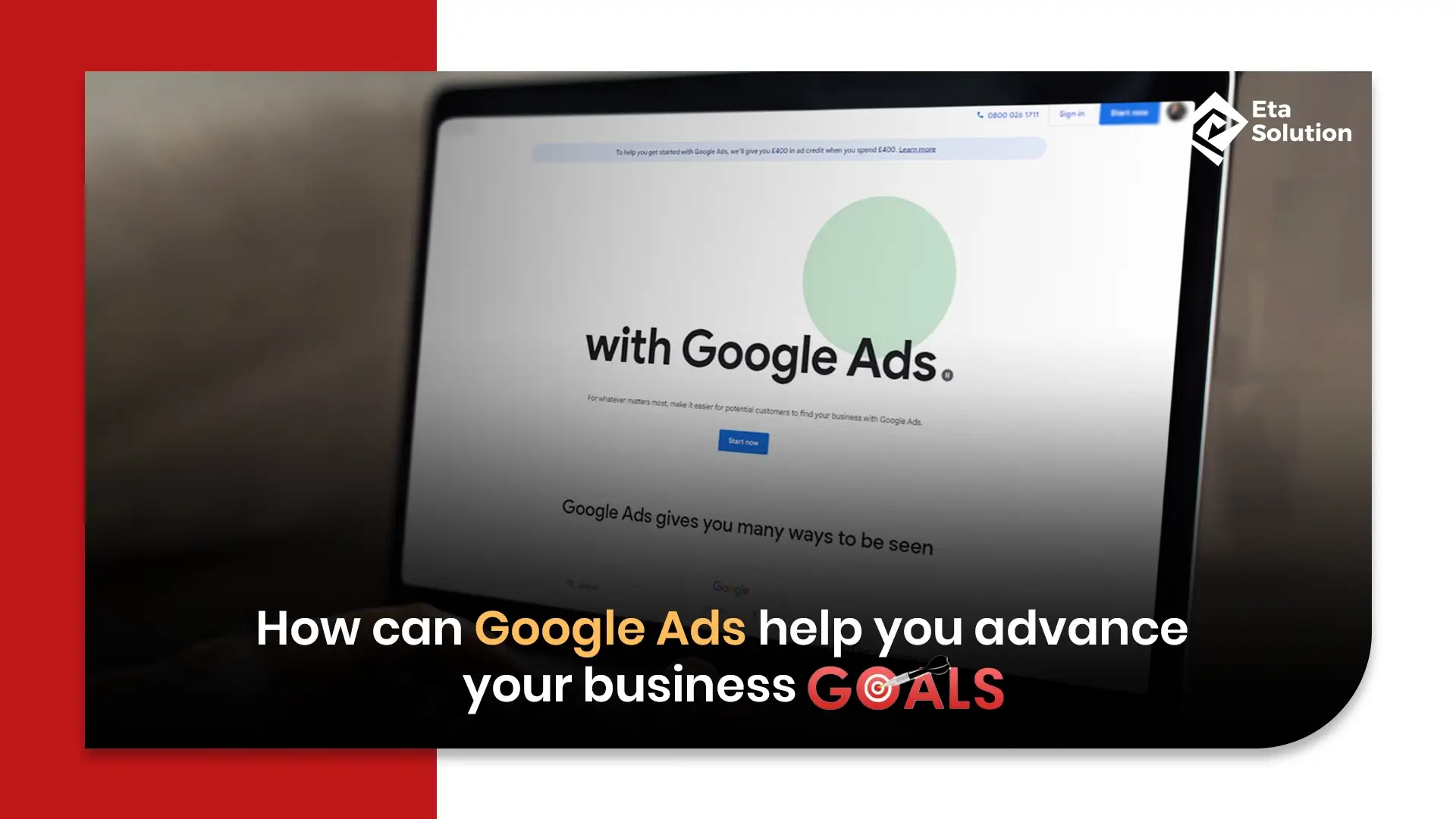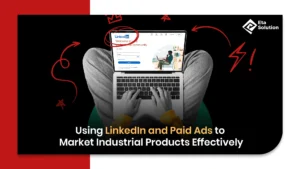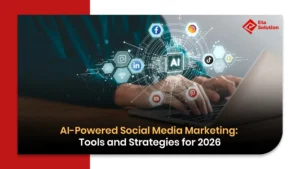
How Google Ads Can Help You Grow and Achieve Your Business Goals
The Real Power Behind Every Click
Ever noticed how some brands seem to dominate search results no matter when or what you search? That’s not luck. It’s a precision-engineered digital strategy powered by Google Ads. Today, businesses aren’t just using online advertising to get visibility; they’re using it to generate qualified leads, drive conversions, and build measurable marketing ROI.
And while many marketers “run campaigns,” only a few truly know how to make PPC advertising work like an investment portfolio, optimizing every click to serve business goals. Let’s explore how to do that with a few expert-level Google Ads tips that complement your marketing strategy for stronger, cross-platform performance.
1. What Are Google Ads
Google Ads is a platform through which a business pays Google in order to show its ads to users on Google Search and different sites that are part of the Google network. Whatever the business is, ads based on searches or campaigns through videos on YouTube help the brand to be found by soon-to-be buyers anytime and anywhere they want.
It is a pay-per-click system, that is, payment is only made when the ads are clicked on. The best feature of Google Ads is that precision, power, and scalability are the main factors.
2. Why Google Ads Are Essential to Businesses
Paid search is the favorite way of more than 8 out of 10 global enterprises to access users with a serious purchase intention in 2025. Google Ads is characterized by instant impact; obviously, it also gives you the freedom to experiment and optimize your campaign from moment to moment, as organic marketing can’t deliver on such a massive scale.
By using this platform, business people will get:
- At the very top of the search results immediate visibility.
- Precise audience targeting via demographics, location, and interests.
- Performance metrics-driven instruments can be used to adjust ad tactics.
That is to say, the money spent is not just sunk; it is spent where returns are yielded the fastest.
3. Google Ads Can Attract Perfectly Suitable Visitors
Google’s use of targeting tools is the largest part of the selling argument. You do not get a broad exposure of your market, but instead, you receive access to the users who have already demonstrated their intent in one of such activities as buying, learning, or comparing. To accomplish this Google platform employs:
- Using keywords for targeting those who are searching for relevant terms.
- In-market audiences allow companies to get in touch with users prepared to purchase.
- Custom intent audiences that have been developed with the help of your analytics data.
The crux of this tactic is that instead of mere viewing, every ad presentation results in the execution of your online marketing strategy, which thus paves the way for both lean and efficient campaigns with a high yield.
4. Defining Clear Business Goals when Using Google Ads
Without actually spending a dime, try to figure out what “winning” really is. If it happens that your aim is to generate leads, increase sales of products in e-commerce stores, or make the brand more well-known, then not only a single word of the entire campaign from keywords to bidding should diverge from the path, but also everything should be in harmony with it.
A smart goal setup is such that:
- Main objective – traffic, leads, or conversions?
- KPIs: CTR, CPA, conversion rate, or ROAS.
- Milestones that are time-bounded for testing and scaling.
With no definite idea, even very efficient campaigns could be maneuvering towards the wrong metrics.
5. The Different Types of Campaigns in Google Ads
We could summarize the principal advertisement campaigns a company can have knowledge of as follows:
- Search Ads: These are the ads that the user can see after typing a query in Google. Best for generating leads directly related to the question asked.
- Display Ads: The purpose of these ads is to make consumers remember the brand through the use of visual elements on websites or apps.
- Video Ads: They are performed on YouTube and its partner websites to increase customer engagement.
- Shopping Ads: Are the ones that feature the product actually along with the price, in the segment of the search engine.
- Performance Max: Employs full automation for advert placement throughout the entire Google ecosystem.
The function of a subtype in each case is a different moment in the digital marketing funnel. Clever marketers blend each type to embrace the stages of awareness, consideration, and conversion.
6. Keyword Research to Achieve Google Ads Campaign Success
This is the area where most of the ad campaigns flop or soar. Keyword research influences your scope, cost, and conversion potential. Don’t just limit yourself to taking keywords at face value. Discover the long-tail keywords that your rivals are unaware of.
Use such tools as Google Keyword Planner, SEMrush, or Ahrefs to answer the queries:
- Search volume and competition.
- Intent.
- Negative keywords to cut irrelevant traffic.
One underused strategy? Reviewing search terms reports weekly. That’s where hidden keyword gold lies.
7. Creating High-Converting Ad Copies
Ad copywriting in online advertising isn’t about being creative; it’s about being relevant. Your ad has 90 characters to convince a user to click.
Winning ad copies usually follow this formula:
- Headline: State the exact offer or benefit.
- Description: Reinforce urgency or value.
By default, Google will dynamically change the keywords in the ad to match what the searcher has typed. Also, A/B experiments work like a charm if you want to find out what people are really into; that is, by far the quickest way.
8. Google Ads Bidding Strategies
The way you bet will determine how good or bad it will be to use the money that the ads have been allocated for. Common strategies include:
- Manual CPC: You control every bid. Great for precision.
- Target CPA: Google auto-optimizes for desired cost-per-acquisition.
- Maximize Conversions: Ideal for testing algorithms.
- ROAS-based bidding: Best for data-rich accounts focused on profitability.
Start manual, gather conversion data, then switch to smart bidding for scalability.
9. Using Google Ads for Lead Generation
For B2B brands, Google Ads Services in Ahmedabad and globally have proven that search-based intent can drive unmatched lead generation quality. When structured well, even a $1 click can bring in high-ticket conversions.
How to make it function:
- Put together search ads with remarketing to interact again with people who have left your site.
- Put lead forms straight in Google Ads to make signing up easy and quick.
- Don’t only count the number of leads but also the quality of leads through CRM integration.
Innovators such as Salesforce and HubSpot award more than 40% of their qualified leads to the efficiently working Google Ads funnels.
10. Tracking and Measuring Google Ads Performance
Data without interpretation is useless. Always monitor these key ad performance metrics:
- CTR: Reveals ad appeal.
- Conversion rate: Measures post-click success.
- Cost per lead: Determines profitability.
- Impression share: Tracks competitiveness.
Use Google Analytics 4 and Tag Manager for advanced event tracking. When attribution modeling is configured properly, you’ll know exactly which campaigns drive results and which waste spend.
11. Retargeting and Remarketing Strategies
Nearly 92% of first-time visitors don’t convert. That’s where remarketing earns its name.
Use:
- Dynamic remarketing: Show users the exact products they viewed.
- List-based remarketing: Reach out to your current leads with new offers.
- Cross-channel retargeting: Use different platforms to reach more people with your ads on YouTube and Gmail.
If it is used cleverly, remarketing can improve the conversion rates by about 4 times, as per the data provided by WordStream.
12. Typical Google Ads Errors to be Careful of
Such errors are committed by seasoned marketers as well.
- Targeting too broad or irrelevant keywords.
- Neglecting negative keywords.
- Ignoring conversion tracking.
- Relying entirely on automated bidding too soon.
Avoiding these not only saves budget it also keeps your online marketing strategy clean and data-backed.
Closing Take
It is not the campaigns with the most clicks that are the best; it is the campaigns that create a demonstrable business impact. It doesn’t matter if you are managing a local campaign with Google Ads services in Ahmedabad or a multi-region account – the rule is the same: every click is an opportunity to find out something.
While digital is changing every week, the smart brands do not look for the next thing; they master the fundamentals, have extreme focus on data, and keep everything current.
So the question remains: are you running ads or building a system that will produce continued business growth?
Absolutely. Google Ads is highly versatile and can be customized to suit different industries and business models. Whether you run an e-commerce store, a local service, a healthcare practice, or a B2B company, you can tailor your campaigns to target specific audiences and achieve unique goals. With the right keyword strategy and ad optimization, nearly any business can benefit from Google Ads advertising.
Success in Google Ads can be tracked through key performance metrics such as impressions, clicks, click-through rate (CTR), conversion rate, cost per click (CPC), and return on ad spend (ROAS). Google Ads also integrates with Google Analytics, giving you deeper insights into user behavior and campaign performance. By regularly analyzing these metrics, you can identify what’s working, make data-driven decisions, and continuously improve your campaigns.
Google Ads supports a wide range of goals, including increasing website traffic, generating leads, boosting online sales, promoting mobile apps, or enhancing brand visibility. Whether you’re looking to drive more foot traffic to a physical store or increase e-commerce conversions, Google Ads offers specific campaign types and bidding strategies that align perfectly with your objectives.
Unlike organic SEO, which takes time to show results, Google Ads provides instant visibility. Once your campaign goes live, your ads can appear on Google Search and partner websites within hours. This immediate exposure helps you attract potential customers quickly, generate traffic, and achieve short-term marketing goals like sales or lead generation. Moreover, continuous campaign optimization ensures long-term growth and better ROI over time.
Yes, Google Ads plays a vital role in enhancing brand awareness. Through Search, Display, and YouTube campaigns, you can showcase your brand across multiple platforms to millions of users. Even if users don’t click on your ads immediately, repeated exposure helps build familiarity and trust over time. Display ads and video campaigns, in particular, are great for spreading brand messages and creating strong visual impressions among your target audience.

What started as a passion for marketing years ago turned into a purposeful journey of helping businesses communicate in a way that truly connects. I’m Heta Dave, the Founder & CEO of Eta Marketing Solution! With a sharp focus on strategy and human-first marketing, I closely work with brands to help them stand out of the crowd and create something that lasts, not just in visibility, but in impact!

Industrial Product Marketing with LinkedIn & Paid Ads

Top Digital Marketing Strategies for Industrial Products in 2026

B2B Product Launch Strategies: From Pre-Launch to Go-To-Market

